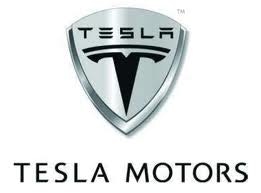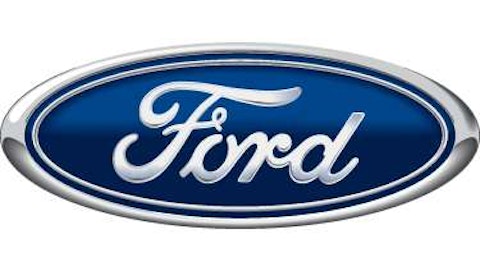For the past two months, Tesla Motors Inc (NASDAQ:TSLA)’s stock has risen more than 100% amid positive investor sentiment. At the outset of July, the stock received an upgrade from research firm Jefferies. The research firm ventured that there was still significant upside in Tesla, increasing its price target from $70 to $130. Much of this positivity is based on the belief that Tesla will be able to meet the 21,000-vehicle shipment guidance it placed for the year, signaling evident demand.
While speculation on Tesla Motors Inc (NASDAQ:TSLA)’s rally is not new, it has now gained significant momentum in light of Tesla’s astronomical rise. Analysts arguing for and against the rally have presented equally compelling cases with the latter arguing that Tesla will correct itself and take a nose-dive for the records.
Tesla Motors Inc (NASDAQ:TSLA)’s bear case has largely revolved around the phrase “exciting narrative and poor fundamentals.” In the past quarter, the company poked its head above the much-coveted break-even point. Critics however, argue that this newly found profitability rode on selling carbon credits to other automakers rather than actual car sales. Because Tesla sells only electric cars, there is a California law that compels conventional automakers to essentially subsidize Tesla’s operations through the buying of carbon credits. In the past profitable quarter, it is argued that Tesla received $35,000 to $45,000 in carbon-credit sales for each Model S. Most critics argue that this is not sustainable.
Despite the well-thought-out arguments that accompany this doomsday outlook, there are three key reasons why Tesla Motors Inc (NASDAQ:TSLA)’s rally still hasn’t played out.
Product differentiation
Tesla is considerably small when stacked against some of its competitors. Nonetheless, it has been able to put up a formidable fight in the U.S. It has pulled this off through enhanced product differentiation.
In the first quarter of 2013, its luxury Model S performed better than most of its supposedly bigger peers. Model S sales figures came out ahead of big names like Mercedes and BMW in the luxury segment. Going by Tesla Motors Inc (NASDAQ:TSLA)’s own numbers, the Model S delivered more than 4,750 vehicles in the U.S. Numbers from BMW’s 7 series paled in comparison to this; coming in at 2,338.
How did Tesla manage to pull this off?
In addition to selling style and comfort like its peers, Tesla went the extra mile to offer energy efficiency and flexible payment plans. It not only enhanced its selling point by arguing that Tesla was the best choice in view of uncertain gas prices, but it made a convincing move to rope in users from the mass market as well. Tesla CEO Elon Musk earlier on in the year unveiled a new lease-buy scheme that reduced the burden of paying lump sums and instead argued for monthly car lease costs of about $500.
Big players like General Motors Company (NYSE:GM) have now diversified their risks in the luxury segment in view of Tesla Motors Inc (NASDAQ:TSLA)’s aggressive stance. Instead of focusing largely on its U.S home market, the auto bigwig has instead expanded its luxury footprint in the world’s biggest automobile market, China. It has now started working on setting up a Cadillac factory in Shanghai and hopes to compete with brands such as Audi and BMW.
Customer experience
Customer experience is another area that Tesla has taken a profound emphatic stance. As you now know, Tesla directly makes contact with its end consumers. The company has scrapped the need for car dealers and has instead replaced dealer showrooms with its own factory-owned stores. This move greatly improves the customer experience and heightens the chances of achieving unprecedented customer-retention rates. The introduction and subsequent growth of TeslaMotorsClub.com, a site dedicated to sharing insights on the brand, has also helped customers build an incredible relationship with the company.
Peers like Toyota Motor Corporation (ADR) (NYSE:TM) know all too well about the implications of poor customer experience. In the 2009-2010 time frame, the Toyota Motor Corporation (ADR) (NYSE:TM) name became synonymous with recalls. Now, the problem seems to be re-emerging. Earlier in June, reports came out that the Japanese automaker had recalled 242,000 third-generation Prius vehicles worldwide over brake faults. Such cases are unheard of in Tesla and it is that good relationship with customers that guarantees long-term success.
Innovation
The fact that Tesla was able to successfully advance an electric car for the mass market was in itself a testament to the high levels of innovation at the company. It has now gone a step further to show us that innovation can be used to cut back on costs; not this layoff thing that we see Wall Street executives do all the time.
Wedbush Equity Research argues that the production cost targets for its Gen III vehicle are achievable. The research firm has keyed out Tesla Motors Inc (NASDAQ:TSLA)’s incredible battery strategy as a critical element in controlling costs for the Gen III. Its strategy, which is aided by Panasonic, will allow Tesla to reduce its costs relative to its competitors.
Conclusion
These three factors will steer Tesla to new share-price territories going forward. The rally hasn’t fully played out and Tesla is still far from its prime. It’s not too late to get onto this ship.
The article Three Reasons Why Tesla’s Rally Will Continue originally appeared on Fool.com and is written by Lennox Yieke.
Lennox Yieke has no position in any stocks mentioned. The Motley Fool recommends General Motors and Tesla Motors (NASDAQ:TSLA). The Motley Fool owns shares of Tesla Motors. Lennox is a member of The Motley Fool Blog Network — entries represent the personal opinion of the blogger and are not formally edited.
Copyright © 1995 – 2013 The Motley Fool, LLC. All rights reserved. The Motley Fool has a disclosure policy.





